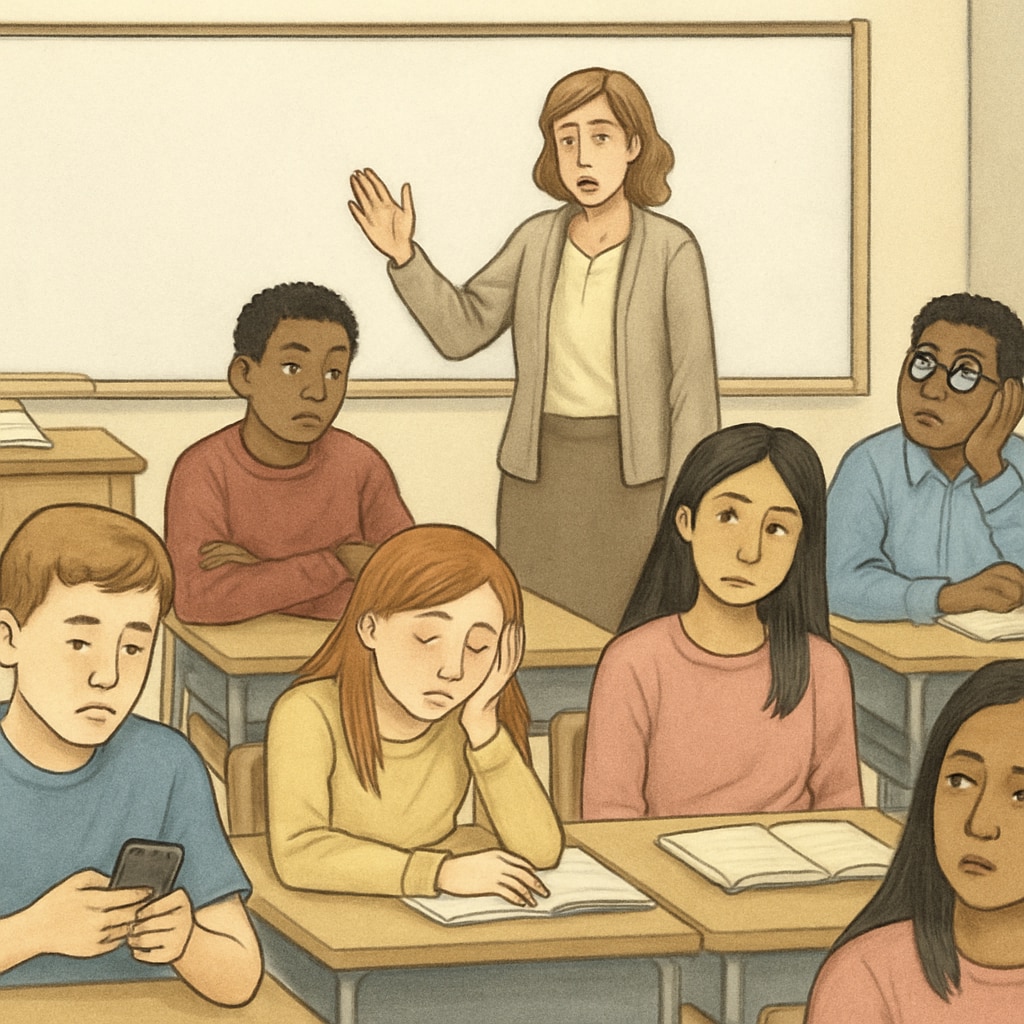Classroom boredom has become a pervasive challenge in K12 education, affecting students worldwide—from the United Kingdom to China, from the United States to Senegal. This hidden issue is undermining effective learning and leaving many students disengaged. By analyzing its causes, understanding its impacts, and exploring potential solutions, educators and policymakers can address this critical obstacle in today’s education systems.
Understanding the Causes of Classroom Boredom
The phenomenon of classroom boredom stems from a variety of factors that transcend borders and cultures. One major contributor is the mismatch between teaching methods and students’ learning preferences. Traditional lecture-based teaching often fails to captivate students who prefer interactive or hands-on learning experiences. Additionally, a rigid curriculum that prioritizes standardized testing over creativity can stifle engagement.
Another factor is the lack of personalized learning approaches. In many classrooms, students are treated as a homogeneous group rather than individuals with unique needs and interests. As a result, lessons may be either too simplistic for advanced learners or too complex for those who struggle, leaving both groups disengaged.

The Global Impact of Student Disengagement
The consequences of classroom boredom extend beyond academic performance. Studies show that disengaged students are more likely to exhibit behavioral issues, skip classes, or even drop out of school altogether. This trend has significant implications for societal development, as education is a cornerstone for creating skilled, motivated citizens.
Moreover, boredom in school can lead to long-term effects on mental health. Persistent disengagement and lack of achievement can foster feelings of inadequacy and frustration, which may contribute to anxiety and depression during adolescence.

Innovative Solutions to Combat Classroom Boredom
Addressing classroom boredom requires a multi-faceted approach that combines innovative teaching methods, curriculum reform, and technological integration. Here are some strategies:
- Interactive Learning: Incorporating group activities, project-based learning, and discussions can make lessons more dynamic and engaging.
- Technology Integration: Tools like educational apps, virtual reality, and gamified learning platforms can enhance student interest and participation.
- Personalized Education: Adaptive learning technologies allow teachers to tailor lessons to individual students’ strengths and weaknesses.
- Teacher Training: Professional development programs can equip educators with modern strategies to foster engagement.
In addition, involving students in curriculum design can ensure that their interests are represented, making lessons more relevant and stimulating.
International Comparisons and Lessons Learned
While classroom boredom is a global issue, different countries have approached it with varying degrees of success. For example, Finland’s education system emphasizes creativity and minimal homework, resulting in high levels of student engagement. Similarly, some schools in Japan integrate mindfulness practices to improve focus and reduce boredom.
By examining these international strategies, educators worldwide can adopt practices that are culturally adaptable and proven to combat disengagement. For instance, Finland’s focus on shorter school hours paired with hands-on projects could inspire reforms in other nations.
Conclusion: Tackling classroom boredom requires a united effort from educators, policymakers, and parents. By addressing its root causes and implementing effective solutions, we can ensure that students worldwide find joy and meaning in their learning experiences.
For further reading on global education trends, visit Education on Britannica or explore Education Systems on Wikipedia.


